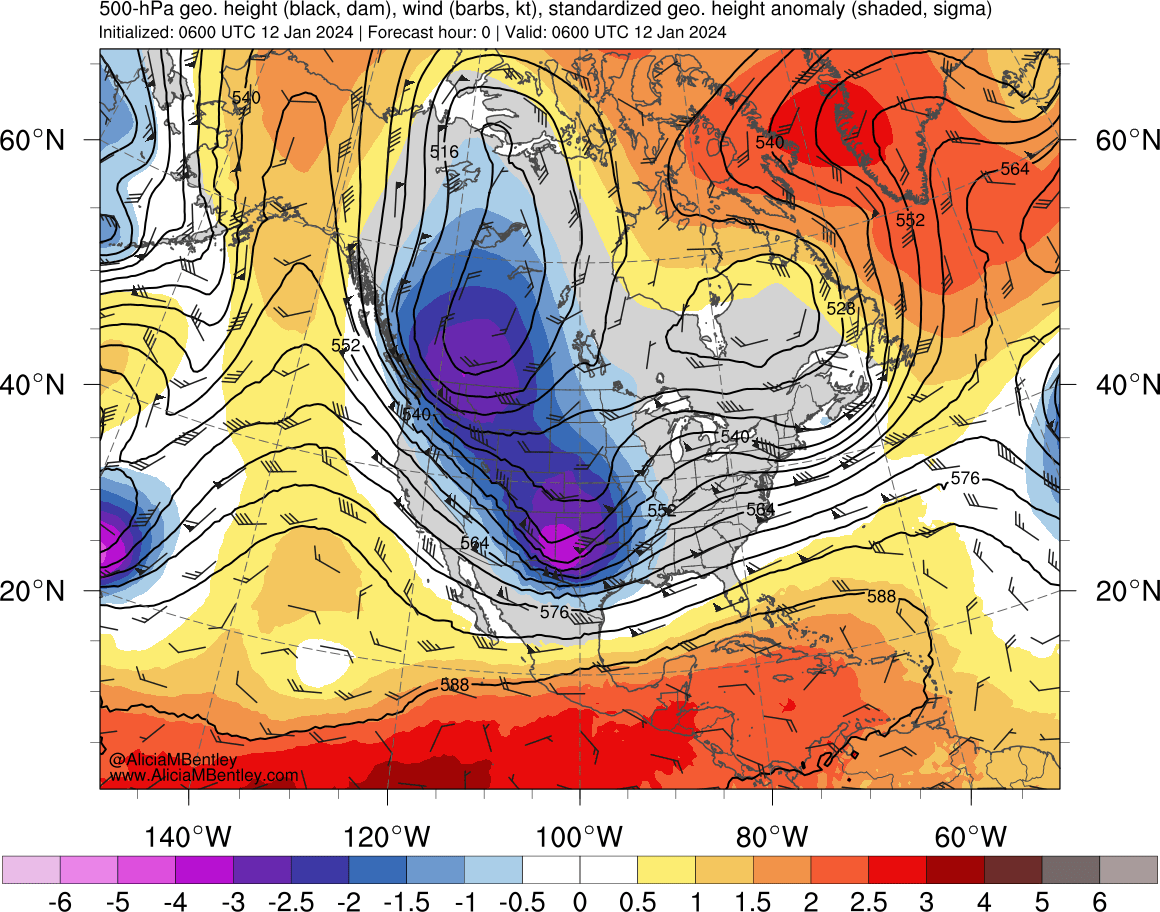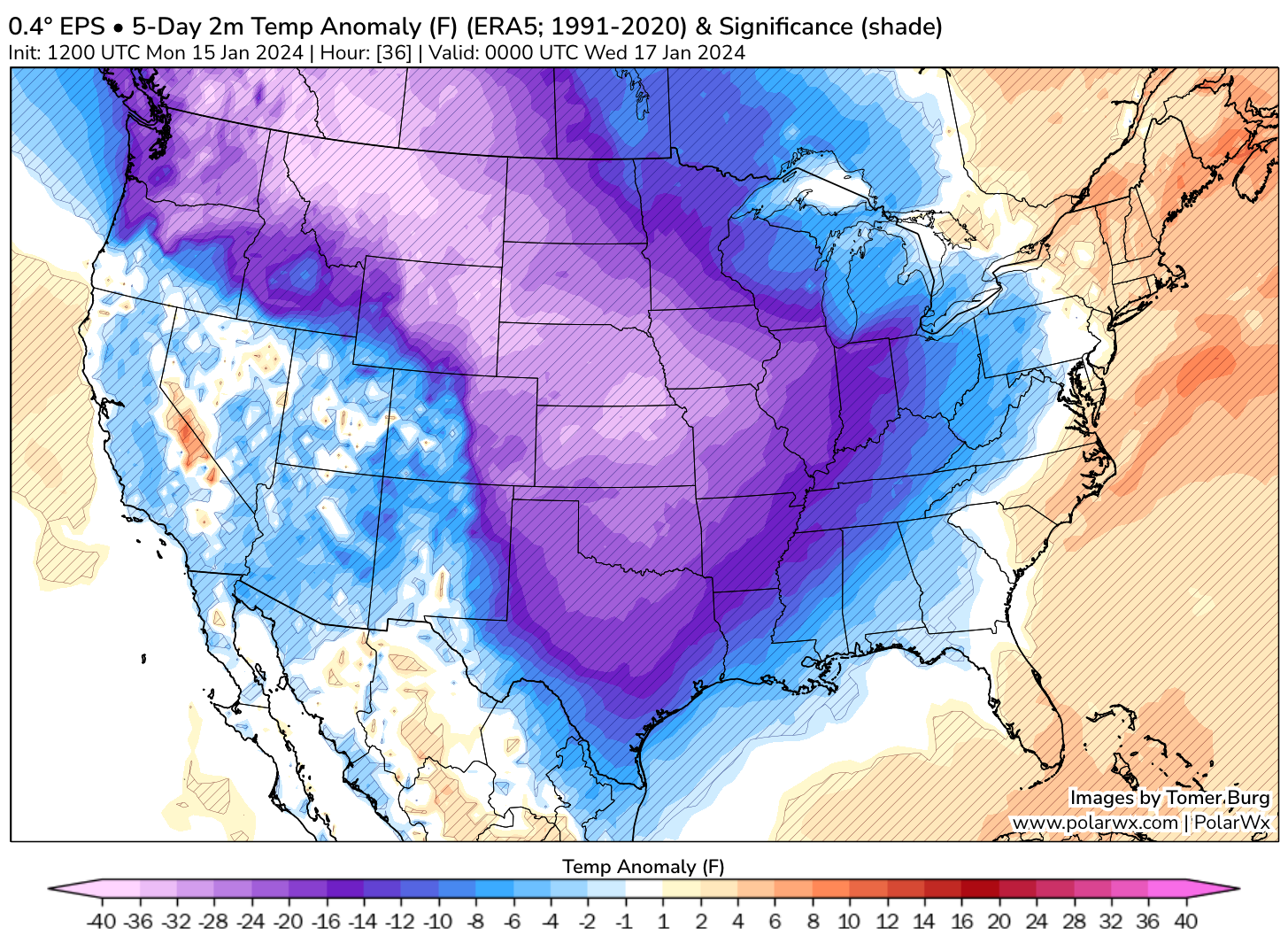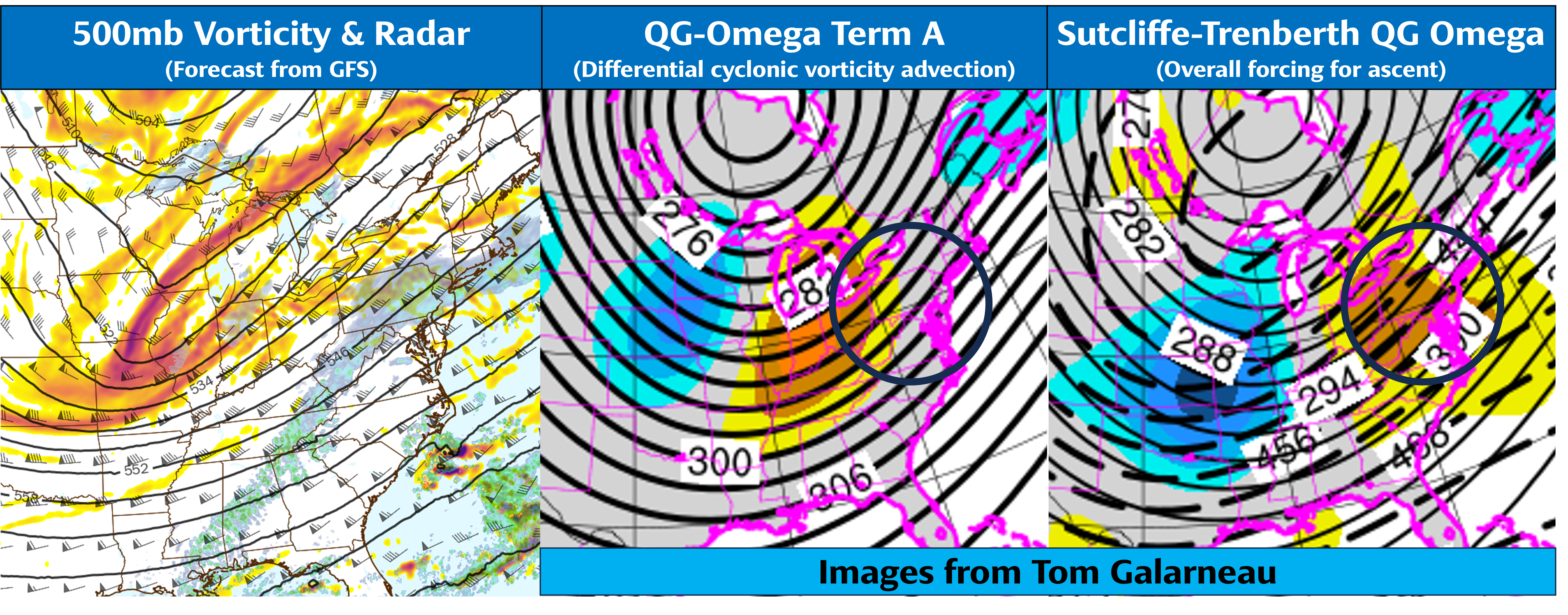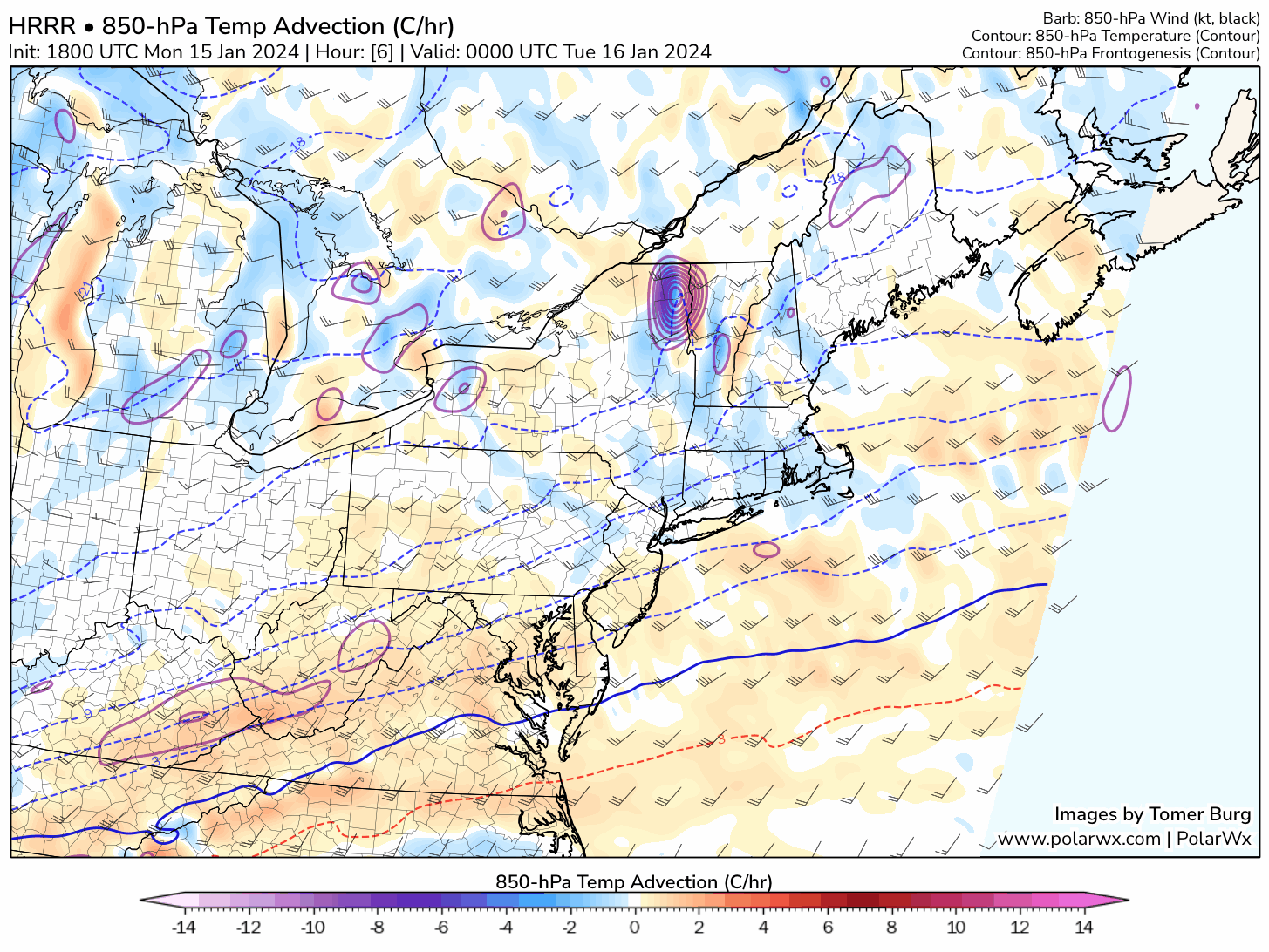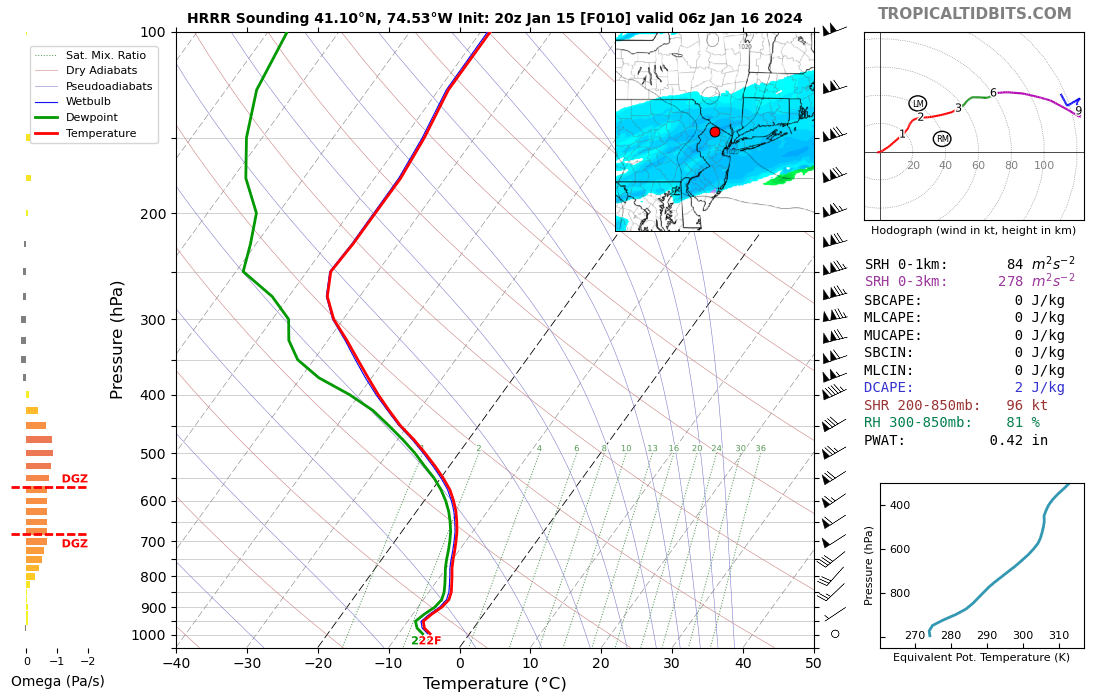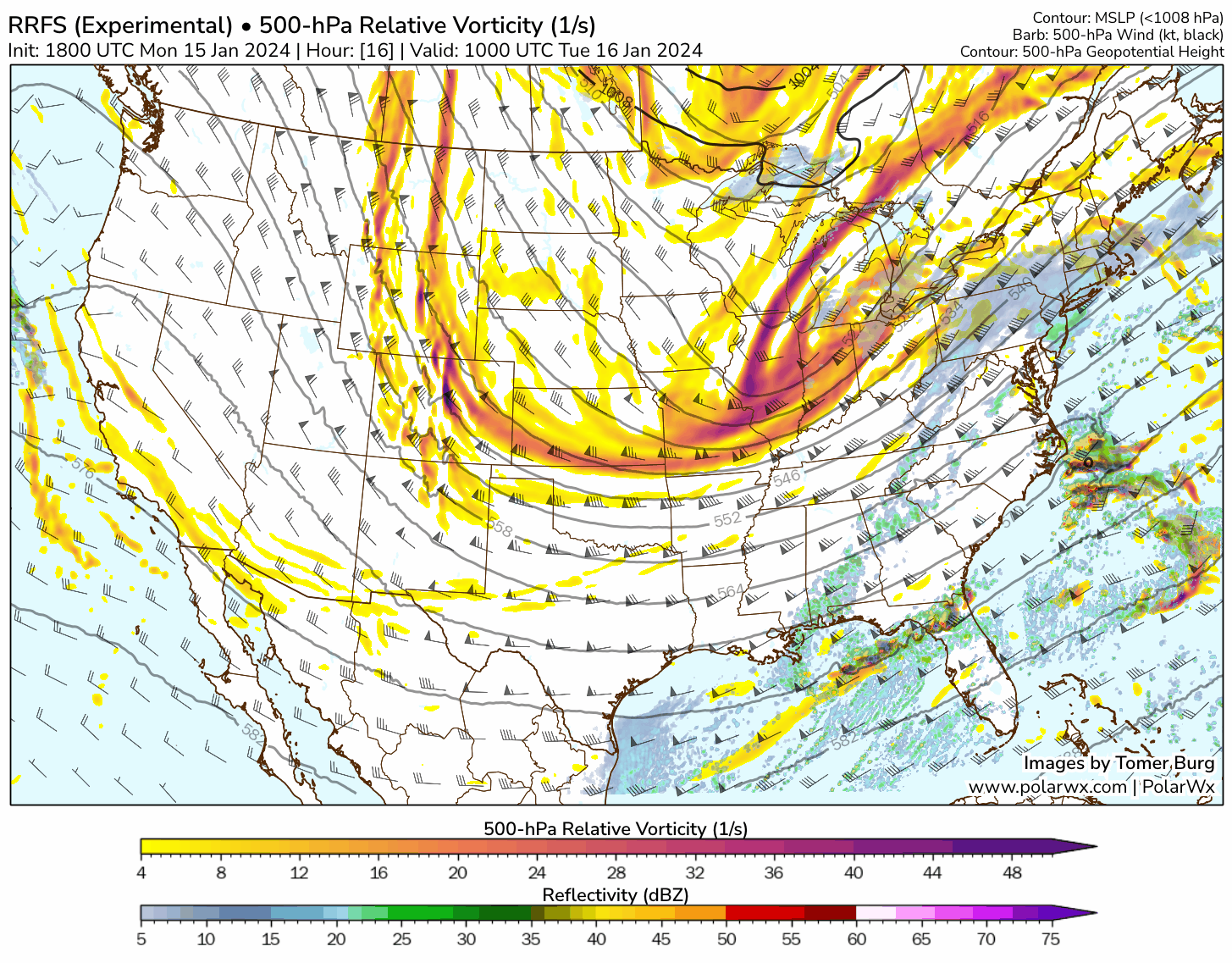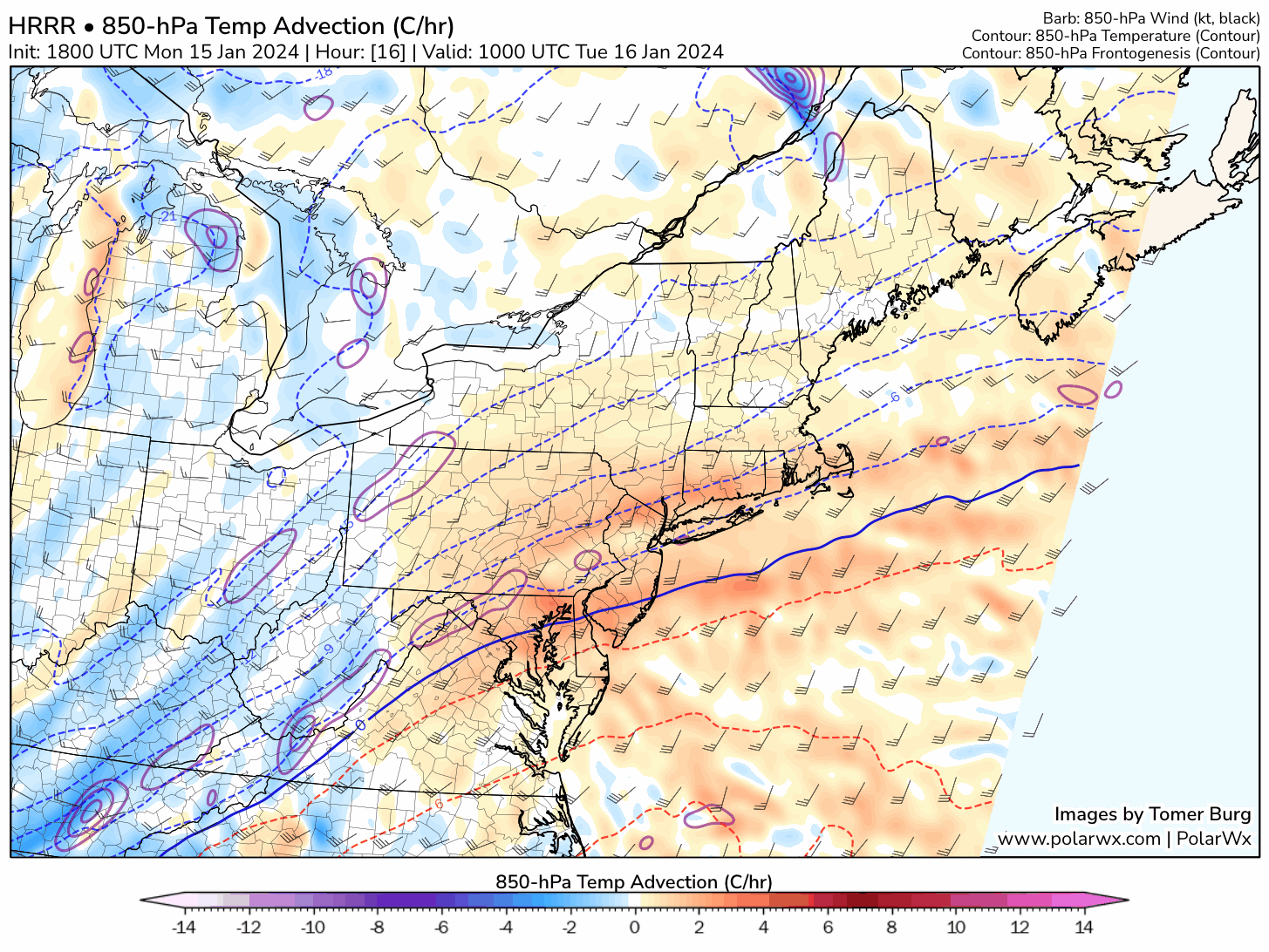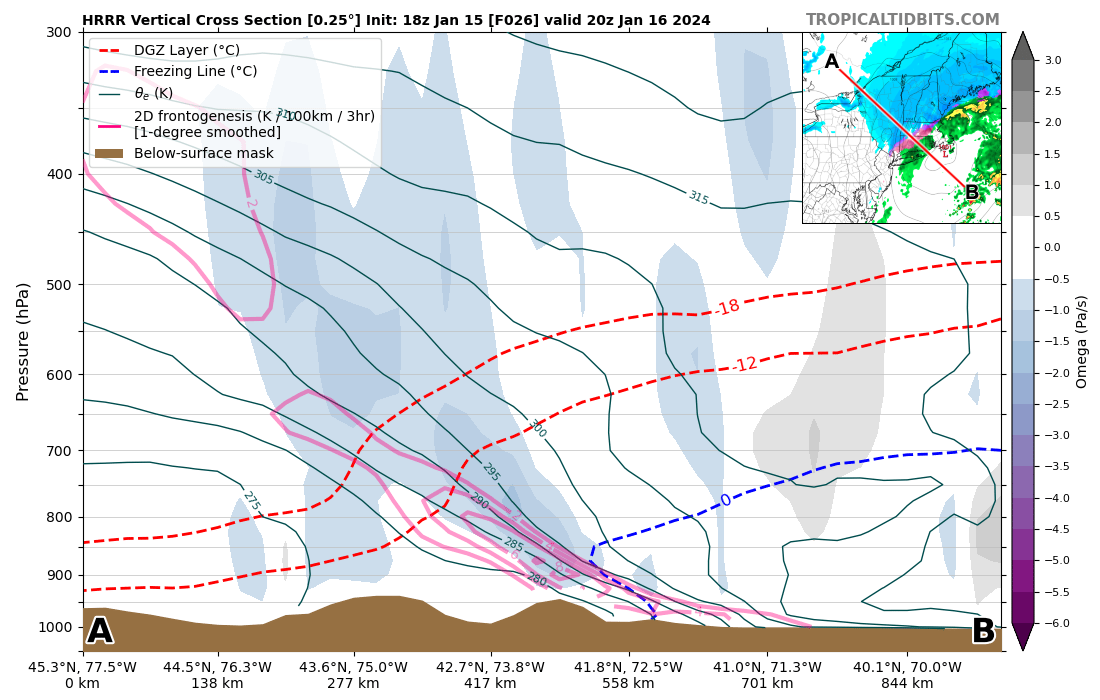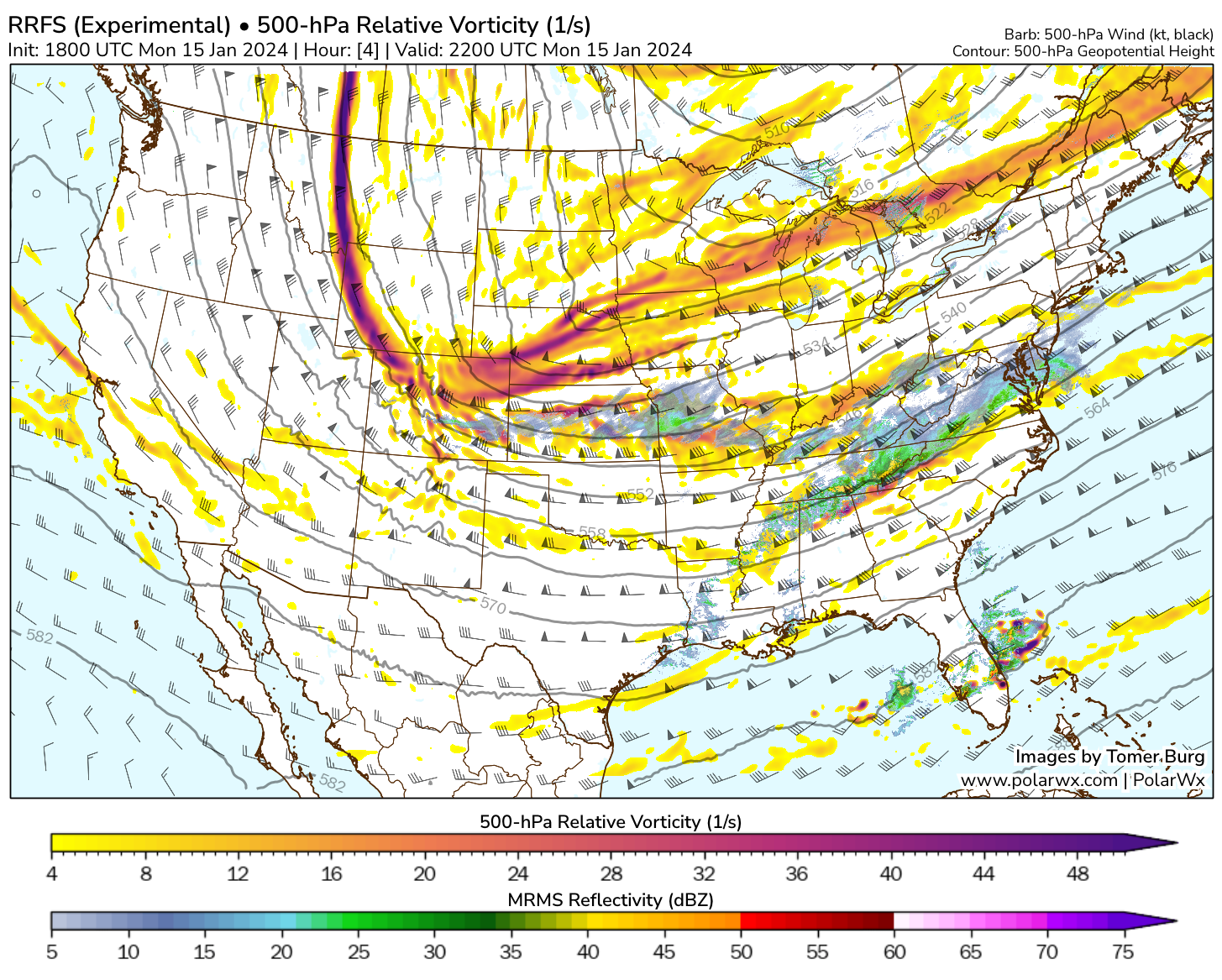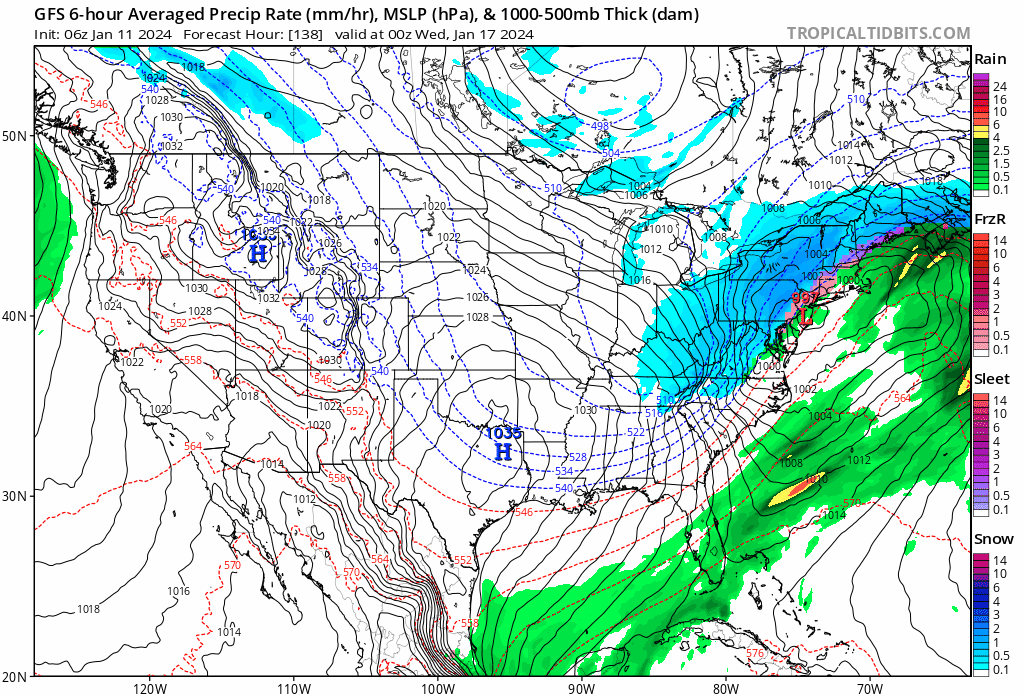
Trends in GFS forecast precipitation rate and type, 500-1000 hPa thickness, and mean sea level pressure, for model runs starting from 11 January 2024. Loop courtesy of Tropical Tidbits.
For the last few days, there was abundant uncertainty among deterministic and ensemble model guidance regarding not just snowfall amounts and location, but even whether a cyclone would develop close enough to the Northeast U.S. to produce widespread precipitation. This inconsistency is highlighted well in this loop of trends in deterministic GFS forecasts over the last few days.
Earlier GFS runs, as well as some ECMWF and CMC runs (not shown), produced a major cyclone rapidly deepening near the coast which would have produced a widespread swath of 6-12 inches of snow – or perhaps even higher – across much of the region, potentially including the I-95 corridor. Several model runs around 102-84 hour lead time – especially in the ECMWF model, and to a lesser extent in the GFS and CMC models – failed to show any precipitation across the region. However, we have since seen a short-term amplification trend among global models... but not back to the same major storm shown earlier, but towards a different configuration with a generally widespread minor-moderate snow event.
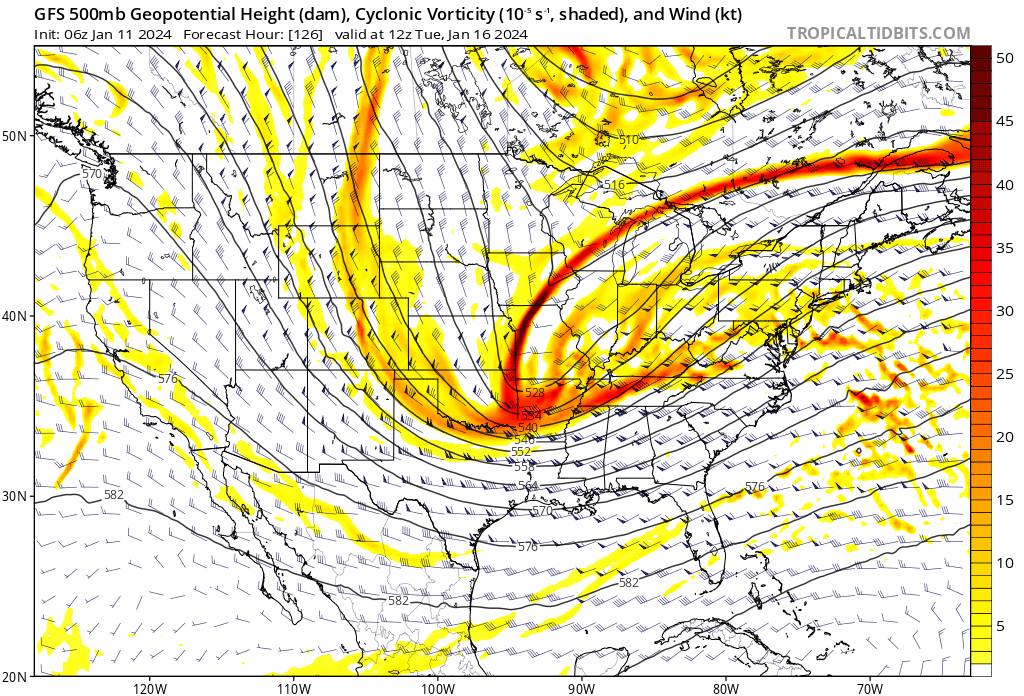
Trends in GFS forecast 500-hPa relative vorticity, for model runs starting from 11 January 2024. Loop courtesy of Tropical Tidbits.
The trend away from a major snow event can be seen cleanly in trends in forecast 500-hPa vorticity and geopotential heights. Earlier runs that had a major snowstorm across the region had a deep positively tilted trough axis with its base near Oklahoma, which subsequently rapidly became negatively tilted, resulting in widespread strong forcing for ascent and cyclogenesis across the Northeast US. Such a scenario would have led to a major snowstorm peaking early on January 17th.
An abrupt change around the 12 January forecast cycles resulted in this vorticity lobe being modeled almost completely flat and much more progressive. Accordingly, modeled vorticity advection and upper-level ageostrophic divergence was much weaker, and these model runs did not develop much if any precipitation in the region. For the sake of simplicity, I won't show the plots here, but
ensemble sensitivity analysis based on operational ensembles at the time indicated a major culprit to this trend away from a major storm was a poorly modeled cutoff low north of Hawaii that ended up more progressive than forecast, resulting in less northeast Pacific ridge amplification and subsequently a less amplified downstream trough.
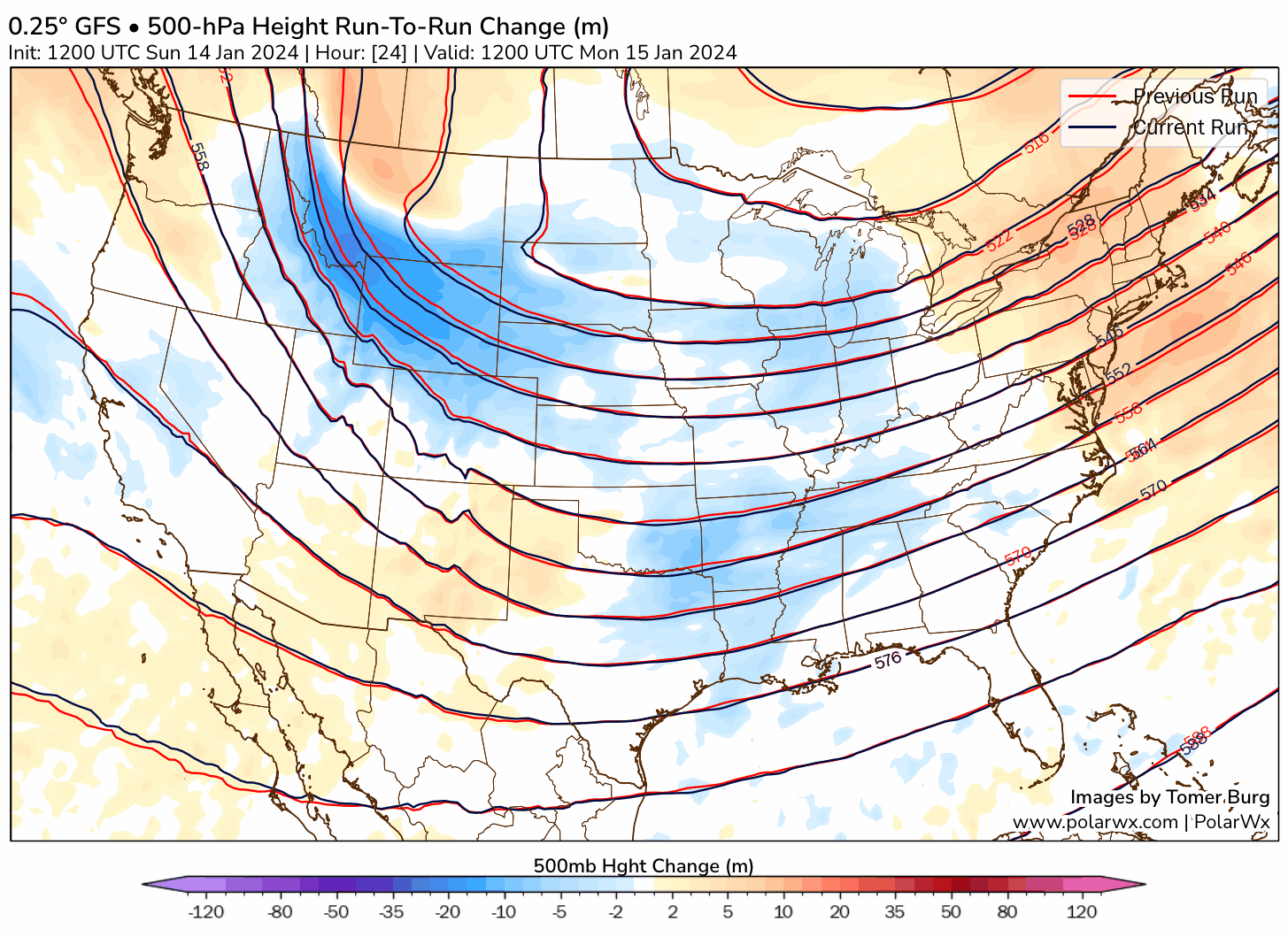
Loop of run-to-run change in GFS forecast 500-hPa geopotential height over the last 5 GFS cycles.
Over the last two days, however, we've seen global models trend back towards a more impactful event, but still not quite the major snowstorm previously modeled. This loop shows a major source of this trend is the vorticity maximum over Montana & Wyoming being analyzed stronger and farther southwest than previously modeled, in conjunction with higher heights over the SW Canadian Rockies, alongside a less suppressive downstream height field over the Great Lakes.
Going back to the previous loop of 500-hPa vorticity trends, we can see this short-term trend manifest as a more amplified and slower shortwave trough, but with the trough base now over Indiana. Recall that runs that had a major I-95/Northeast snowstorm had the trough base much farther south and west. This explains why this short-term amplification trend is primarily favoring the interior Northeast – especially northeastern parts of the region towards Maine – for the highest snow totals, as the trough only forces rapid cyclogenesis once the surface cyclone is already exiting the region near Maine, as opposed to earlier model cycles when this was modeled to occur near the Mid Atlantic.
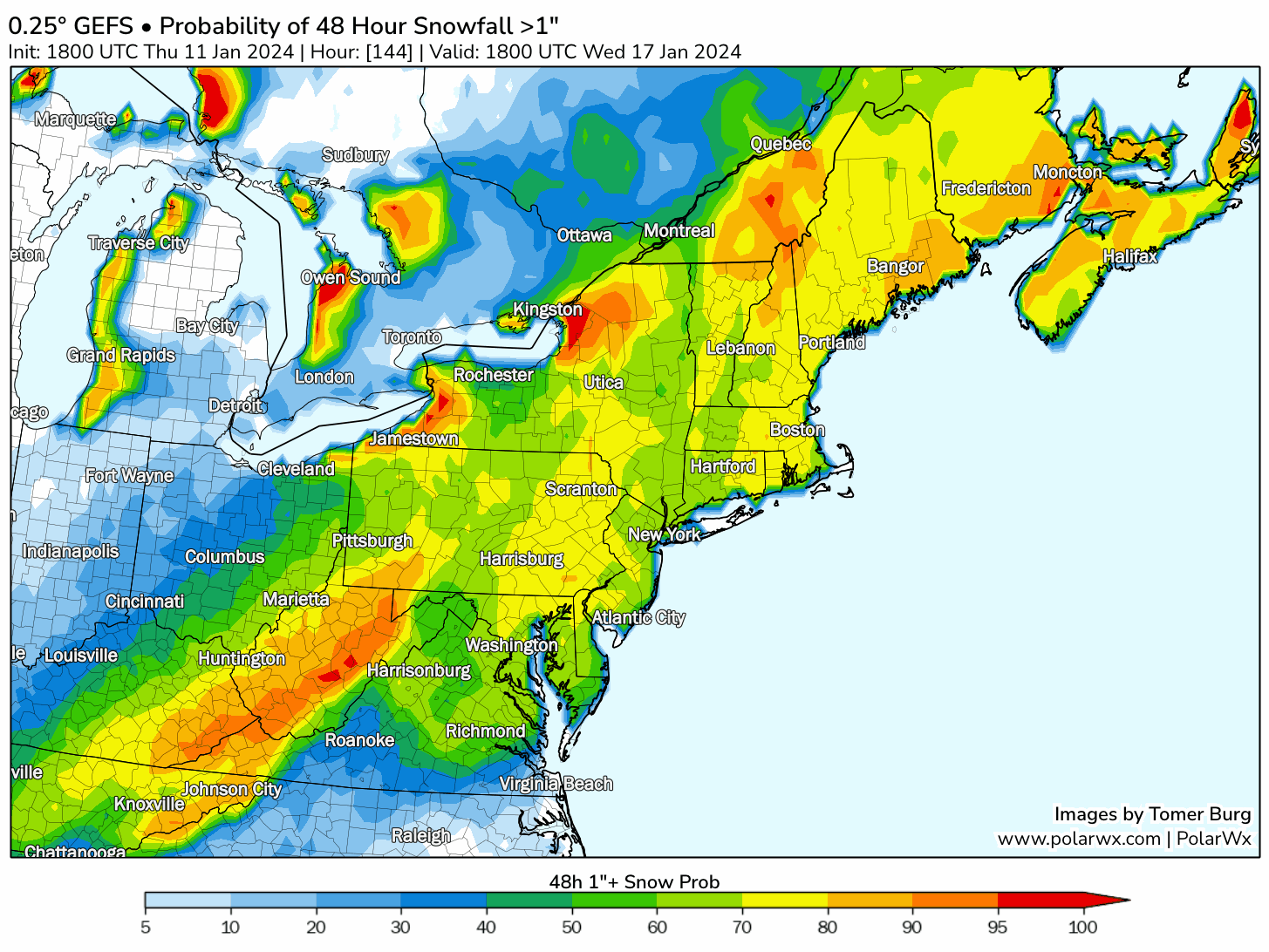
Trend in GEFS forecast 48-hour positive snow depth change (inches), with an in-house method to reduce sleet and freezing rain contribution based on post-processed model precipitation types.
Typically, when there is such large inconsistency among deterministic models, a good approach to use is to rely on ensembles as they offer a much broader look at possible outcomes that a single deterministic run alone cannot reveal. Ensembles are in part a necessity given uncertainty in observations that are ingested into models – for example, uncertainty, biases and errors in standard instruments such as thermometers, radiosondes, etc. – and locations with sparse or no in-situ data observations.
A common issue with ensembles, however, is under-dispersiveness – that is, when an ensemble shows too little spread, such that verification often occurs outside of the ensemble distribution. This is a known issue with the GEFS ensembles, and is evident in this loop of trend in ensemble probability for an inch or more of snow. Earlier runs had widespread probabilities over an inch – as well as over 30-40% chances of widespread snow totals over 6 inches of snow (not shown here) – but by the 0600 UTC 13 January cycle (78-90 hour lead time), probability of over an inch of snow was down to only 15% in NYC and 10% in Albany, NY, locations that are now conclusively expected to receive over an inch of snow.
Another issue with the ensembles we currently have is that as they are run on the global scale, they are subject to the same biases as global models in resolving mesoscale details, and in this case mesoscale models (e.g., NAM, RGEM), while too amplified at their longest lead times, did correctly identify the short-term ampliifcation trend. Accordingly, even as it became clear from higher resolution guidance that a more widespread snow event would occur, global ensembles were too slow to catch up, and probability products based on them (e.g., NBM and WPC snow guidance) were too low for interior areas and favored the highest accumulations too far southeast near the I-95 corridor.
